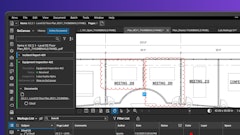Five years after states first started shedding construction jobs, construction employment remains below peak levels in all fifty states and the District of Columbia according to a new analysis released today by the Associated General Contractors of America. Given the continued weakness in construction employment, the association is launching a new effort to encourage Congress to pass years-late legislation to fund highway, bridge and transit construction work.
"The construction industry remains a shell of its former self in too many states," said the association's chief executive officer, Stephen E. Sandherr. "Making long-overdue investments in our nation's aging roads, bridges and transit systems will put people back to work and give a needed boost to the broader economy."
Sandherr noted that construction employment in Nevada has declined more compared to that state's peak employment levels than in any other state. Construction employment in the state declined 61 percent since its peak level in June 2006, from 146,400 employees to just 57,500 as of November 2011. Other states experiencing large declines in construction employment compared to peak levels include Arizona (55 percent below peak); Florida (52 percent below peak) and Idaho (43 percent below peak).
In contrast, construction employment has almost returned to peak levels in North Dakota, where the November 2011 industry employment of 25,400 is only 3 percent below the peak set in September 2011 of 26,100. Other states with current employment only slightly below peak levels include Oklahoma (6 percent below peak); Louisiana (9 percent below peak) and South Dakota (13 percent below peak).
Association officials said that one way to help boost construction employment was for Congress to finally enact the years-late surface transportation bill that sets funding levels for federal investments in highway, bridge and transit construction. Since the prior bill expired in late 2009, Congress has passed a series of short-term funding extensions. These extensions make it difficult for transportation planners to move forward on key projects because they don't know how much long-term funding will be available.
As part of its new effort to push for passage of a new transportation bill, the association's members will be contacting their Congressional representatives and urging them to pass the legislation. The association will also work with local groups representing the broader business and labor communities to have them explain the need for new transportation investments. And the association will launch new online advertising and conduct a number of media events around the country to highlight the need for the transportation bill.
For more information about the new effort, visit www.agc.org/roads. Read analysis of construction employment compared to peak levels.

















